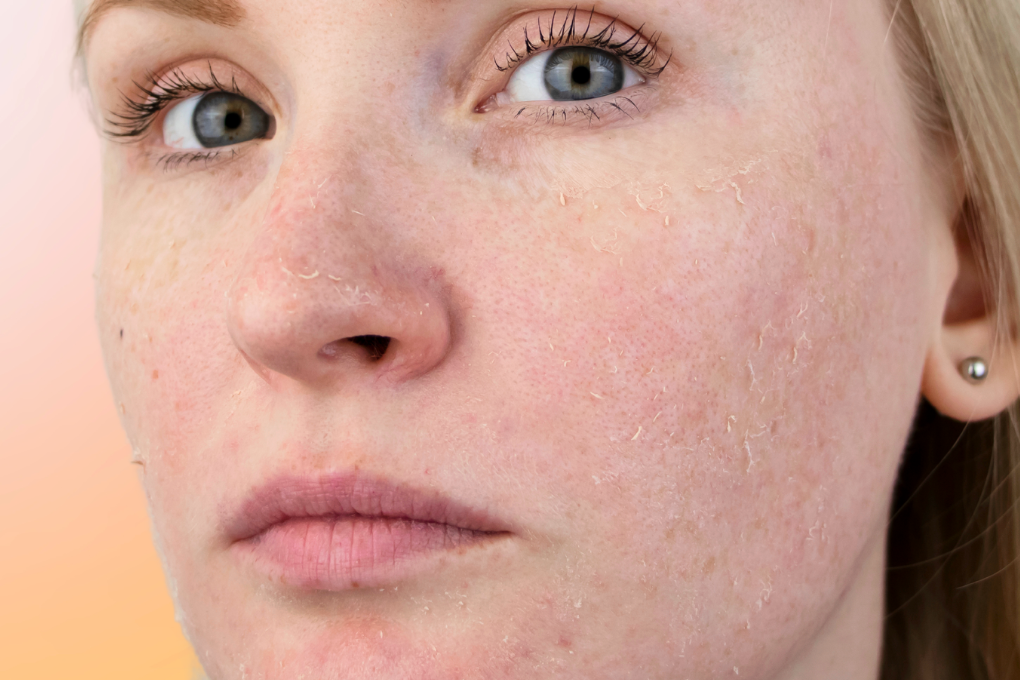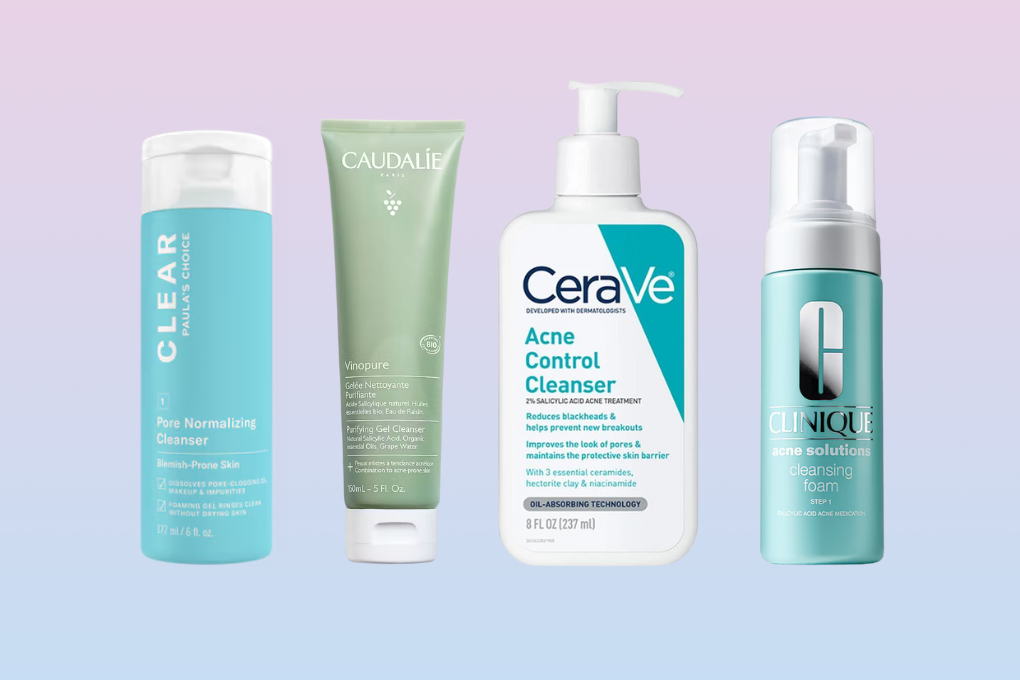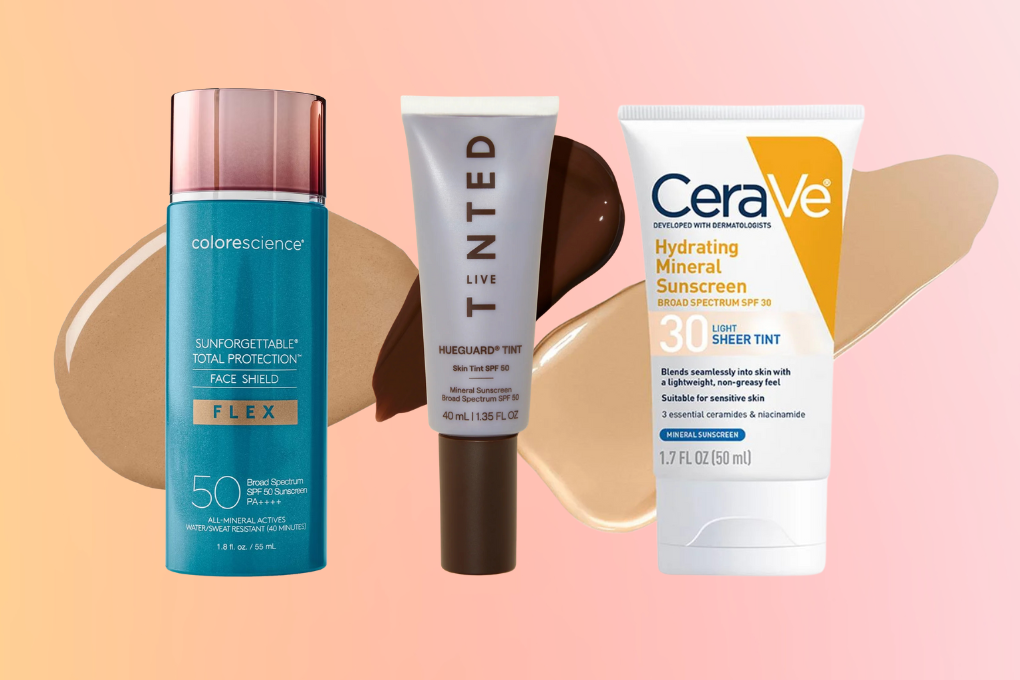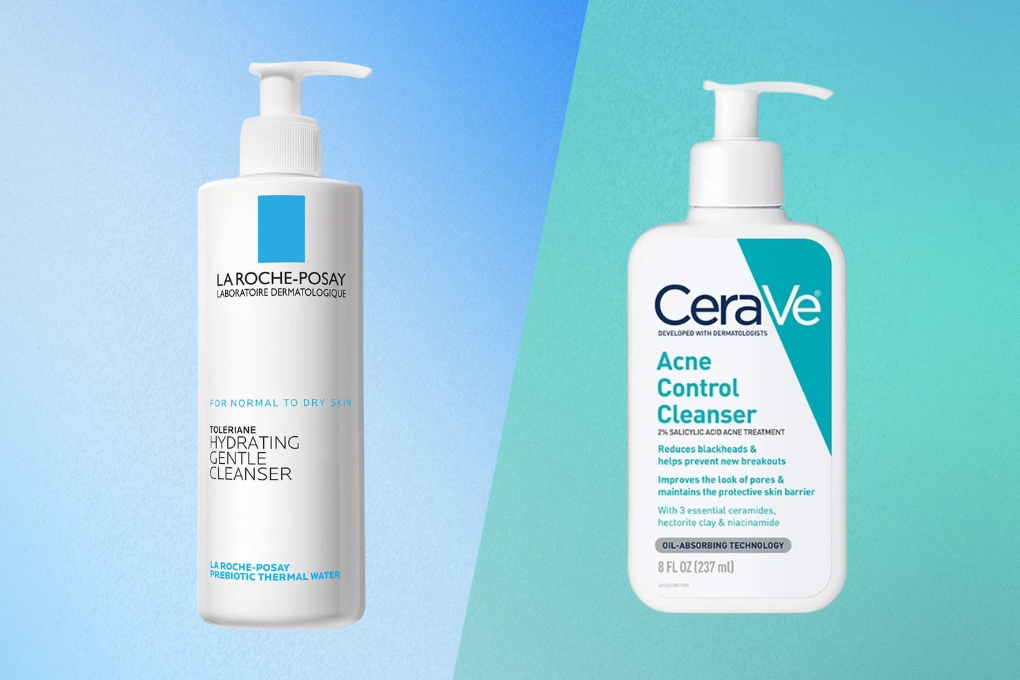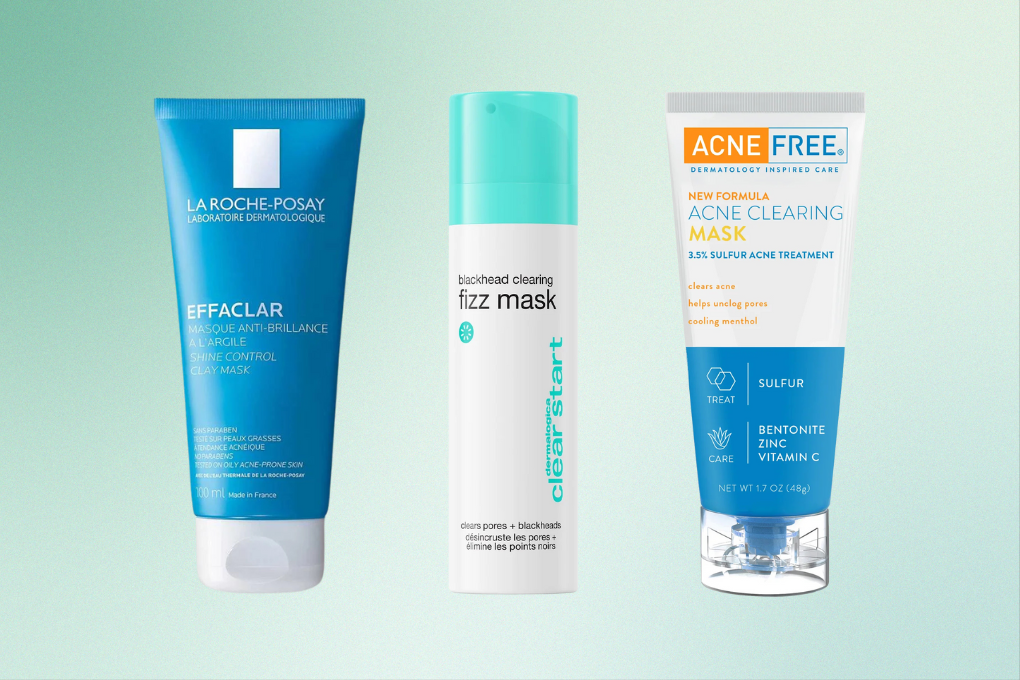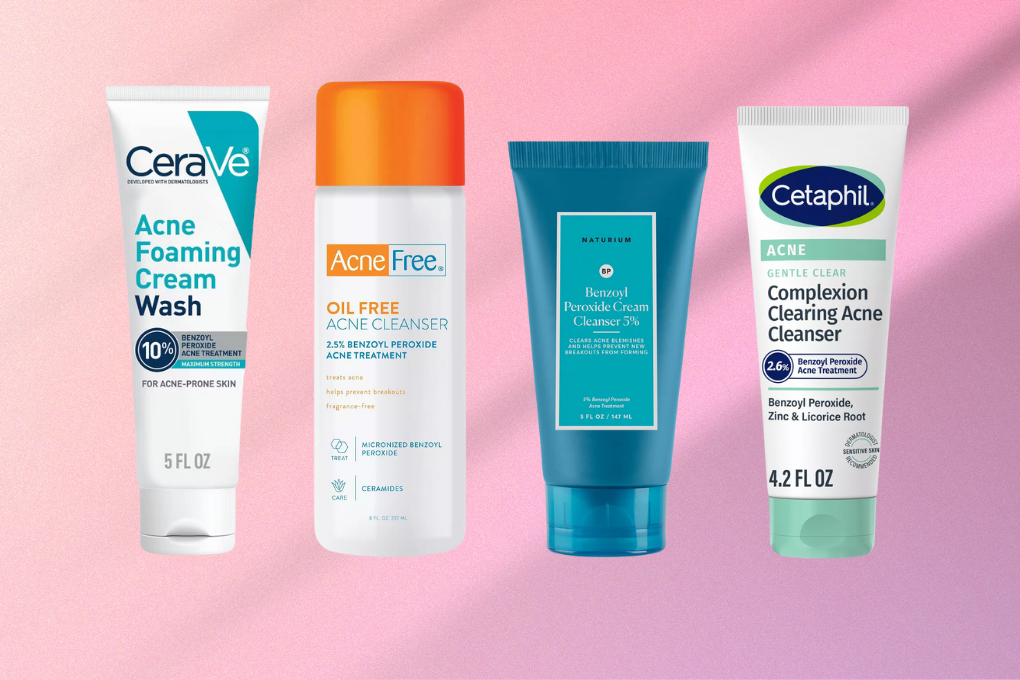If you’ve started using a topical retinoid such as tretinoin or adapalene to help clear your acne, you may be in for a rude shock if, instead of showing improvement, your skin takes a turn for the worse during the first few weeks.
When you are dealing with acne and already self conscious about your skin, it can be disheartening to struggle with irritation, peeling, and sometimes even more acne. This uncomfortable adjustment period is referred to as retinization, but it is also called the retinoid uglies, the retinol uglies, and the tretinoin uglies.
Fortunately, the retinoid uglies is a case of your skin getting worse before it gets better, and it shows what a powerful effect retinoids can have on your skin. Read on to learn more about the retinoid uglies and how to minimize its effect.
What Are Retinoids?
Retinoids are derivatives of vitamin A and are often a first-line treatment option for acne therapy thanks to their proven efficacy. Topical retinoids work by accelerating the turnover of skin cells, which prevents the buildup of dead cells within hair follicles that can lead to the formation of acne. The anti-inflammatory properties of retinoids can also help reduce the redness and swelling associated with more inflamed acne. In addition to clearing acne, retinoids—particularly tretinoin—have been proven to reduce wrinkles and signs of photoaging.
Commonly prescribed retinoids for acne include tretinoin, adapalene, and tazarotene. Adapalene at a lower strength and retinol are also available over the counter.
What Are the Retinoid Uglies?
The retinoid uglies (sometimes called the retinol uglies, the tretinoin uglies, or the retin uglies) is a way of referring to the initial side effects some people experience when they start using retinoids. The term can mean both skin irritation and skin purging, and it is a normal part of your skin adjusting to a retinoid.
The retinoid uglies are not the same as an allergic reaction. If you experience redness, swelling, or itching, stop using the retinoid and see a doctor or dermatologist.
Skin Irritation from Retinoids
While retinoids can help improve your skin by increasing the cell turnover, this same function can also cause your skin to temporarily have side effects such as:
- Redness
- Flaking
- Dryness
- Increased sensitivity
Your normal cleanser and moisturizer may begin to sting and you might even notice pieces of your skin peeling off. This is all a result of the skin adjusting to the active ingredient and it is sometimes called retinoid dermatitis.
What is Skin Purging?
Skin purging is a temporary breakout that can occur when you start using a new skincare product, such as a retinoid or chemical exfoliant. Retinoids accelerate the skin’s natural turnover process, meaning that underlying microcomedones (tiny clogged pores) come to the surface faster. As a result, some of us may experience a temporary increase in breakouts when we first start using retinoids.
While it may feel like the retinoid is causing new acne, in reality these breakouts were already due to come out; your retinoid is just bringing them out faster. Breakouts from purging usually last from 4-8 weeks, and most people find that their skin looks clearer and smoother in the long run.
If you are experiencing severe irritation or prolonged breakouts after using retinoids, you should consult your dermatologist. It may be necessary to adjust the strength, frequency of use, formulation, or in rare cases, discontinue it altogether.
Tips to Minimize Purging and Irritation
Here are some suggestions to help you get through purging and irritation from retinoids:
Start Slow
Jumping straight into daily use of retinoids can shock your skin, leading to increased chances of irritation and damaging your skin barrier. Instead, consider applying the product every other night or even once every three nights initially. You can try skin cycling with your retinoid and gradually increase the frequency as your skin acclimates.
Pare Back Skin Care
During your initial phase of retinoid use, you should find ways to simplify your skincare routine. Avoid using other actives or exfoliants concurrently, as this can heighten sensitivity and irritation, and stick to gentle cleansers and moisturizers that will help support your skin barrier instead. You may find that you now need a richer moisturizer to help deal with the dryness from your retinoid.
Paula's Choice Hyaluronic Acid Booster Serum with Ceramides
The Hyaluronic Acid Booster from Paula's Choice is a concentrated serum that deeply hydrates and moisturizes skin. This liquid gel formula is designed to either be used alone or added to a moisturizer or another serum to simplify your routine. Glycerin, hyaluronic acid, and panthenol attract moisture and plump the skin, while ceramides and cholesterol strengthen the skin's barrier to retain the hydration. While expensive, this is a great choice for dehydrated skin that needs a little boost.
- Concentrated serum
- Deeply hydrates and plumps
- Ceramides and cholesterol support skin barrier
- Expensive for small size
EltaMD Skin Recovery Lightweight Moisturizer for Damaged Skin Barrier with Amino Acids
Elta MD's Skin Recovery Light Moisturizer is a weightless lotion designed with acne-prone and sensitive skin in mind. It uses the brand's patented AAComplex of amino acids to restore the skin's natural barrier, which makes it one of our favorite moisturizers to use alongside a strong acne treatment. With hyaluronic acid, glycerin, squalane, and coconut extract, this lotion soothes and moisturizes dehydrated skin while calming irritation and redness.
- Lightweight with hydrating ingredients
- AAComplex restores skin barrier
- Great option when using harsh acne treatments
- Expensive
Apply Correctly
A little goes a long way with most retinoids. Put a pea-sized amount onto your fingertip and dot it on your forehead, cheeks, and chin. Then, gently spread and blend it over your entire face, avoiding sensitive areas like the eyes, nostrils, and corners of the mouth.
Use Lower Strength Retinoid
Beginning with a milder formulation can reduce the risk of a difficult adjustment period. As your skin becomes more tolerant, you can consider moving up to a higher strength if necessary.
For example, you can start with over-the-counter 0.1% strength adapalene before using the prescription strength 0.3%. Or you can start a tretinoin prescription as low as 0.025%, and once you are able to use it nightly with no side effects, you can increase to 0.05% and then maybe even 0.1%. If your insurance covers it, the microsphere version of tretinoin is time-released, which can reduce irritation.
La Roche-Posay Effaclar Adapalene Gel 0.1% Treatment
From La Roche-Posay's Effaclar line, which is designed for acne-prone skin, comes their adapalene 0.1% treatment gel. Adapalene is a prescription-strength retinoid available over the counter in the U.S. in 0.1% strength. It works by increasing cell turnover to help prevent acne and can be used to treat blackheads, whiteheads, clogged pores, pimples, and even KP bumps on the arms. La Roche-Posay's version comes in an effective fragrance-free gel that you apply in a thin layer to your face or body once a day.
- Maximum over-the-counter strength
- Non-greasy gel-like texture
- HSA and FSA eligible
- Expensive
The Ordinary Retinal 0.2% Emulsion High-Strength Stabilized Retinaldehyde Serum
The Ordinary has many different retinoid products to choose from, but their Retinal 0.2% Emulsion is their highest strength formula. While primarily advertised for aging, the retinaldehyde in this product is a one-step away from prescription tretinoin (the active form of vitamin A), making it a great retinoid entry point for acne-prone skin. This serum-textured formula will increase cell turnover, helping to remove dead cells that can clog pores.
- Retinaldehyde is a strong over-the-counter retinoid
- Airless pump to protect formula
- Light creamy serum texture
- Small amount
- Yellow hue can rub off on light fabrics
Buffer or Sandwich Method
“Buffering” is a method where you apply moisturizer before your retinoid. By reducing its direct contact with the skin it can diminish potential irritation. The “sandwich method” goes a step further by applying moisturizer before and after your retinoid, sandwiching it between layers of moisturizer.
Start by applying a light moisturizer or gel moisturizer, then the retinoid, and finish with another layer of the same or a thicker moisturizer.
The Ordinary Natural Moisturizing Factors + Beta Glucan Lightweight Gel Moisturizer
Natural Moisturizing Factors + Beta Glucan from The Ordinary is their lightweight gel moisturizer. This clear, oil-free formula immediately refreshes and hydrates your skin and includes the brand's natural moisturizing factors, which include amino acids, urea, and PCA to mimic compounds in the skin's moisture barrier. Along with beta-glucan to hydrate and ceramides for barrier support, this moisturizer will protect your skin from water loss while staying lightweight.
- Great value for larger size
- Natural moisturizing factors, beta glucan, and ceramides fortify skin barrier
- May not be moisturizing enough for some skin types
Sun Protection
Retinoids’ ability to accelerate skin cell turnover, quickly bringing newer skin cells to the surface, can make your skin more sensitive to the sun. Additionally, retinoids can thin the outer layer of the skin while enhancing the deeper layers, making your skin more susceptible to UV damage.
To reduce the risk of irritation or damage from the sun, make sure to use a broad-spectrum sunscreen every day, even on cloudy days, seek shade when the sun is at its peak, and wear protective clothing, sunglasses, and hats.
TULA Protect and Glow Daily Sunscreen Gel Broad Spectrum SPF 30
Tula's Protect and Glow offers daily SPF 30 protection in a glowy gel formula. In addition to filtering UVA and UVB rays from the sun, it also offers protection from blue light and pollution. It's lightweight and sheer formula uses encapsulated technology that breaks on contact and will leave a beautiful glow on your skin; however, if you are sensitive to mica in shimmery products, this might not be the right choice for you. Protect and Glow also includes ingredients to promote even skin tone and probiotic extracts to protect your skin barrier.
- Glowy gel formula
- Blue light and pollution protection
- Probiotic extracts for skin barrier
- Mica may be irritating for some people
- Not water-resistant
Live Tinted Hueguard Skin Tint Hydrating Mineral Sunscreen SPF 50 with a Radiant Finish
Hueguard Skin Tint from Live Tinted hits everything we want in a tinted sunscreen. It comes in a lightweight and hydrating gel-cream formula with a tint that offers a light to medium buildable coverage with a radiant finish, while also providing mineral broad-spectrum protection with non-nano zinc oxide and antioxidants. Thanks to its 11 varied shades that capture a broad scope of skin tones and undertones, many people will be able to find a good match that can be layered for the desired coverage.
- Hydrating gel-cream formula
- 11 varied shades
- Water-resistant for 80 minutes
- Small amount
Apply to Dry Skin
Applying retinoids to damp skin can increase their absorption, which might intensify potential reactions. To minimize this risk, always ensure your skin is thoroughly dry before application. After washing your face, wait about 10-15 minutes before applying your retinoid.
Other Treatments
If you have inflammatory acne, such as cystic acne, and are at risk for a big breakout or scarring from a purging phase, you can speak to your doctor about other treatments that can be used concurrently with your retinoid to manage or reduce purging while you adjust.
Common co-treatments include: topical antibiotics, benzoyl peroxide, oral antibiotics, azelaic acid, and spironolactone or certain types of birth control pills for hormonal acne. If your acne is severe, your doctor may recommend a course of Accutane first before using topical retinoids.
Skin Purging vs. Breakout
Identifying whether breakouts are due to normal skin purging or a reaction of your skin to the retinoid or other ingredients in the cream or gel it comes in can be challenging. Here are some general characteristics and guidelines to consider:
Location of breakouts
Purging typically occurs in areas where you already get breakouts or have clogged pores. For example, you may normally get pimples and closed comedones on your chin and jawline, and after starting a retinoid, you notice an increase in breakouts on your chin. In this case, it is likely that your skin is “taking out the trash” and bringing previous blockages to the surface. However, if you’re seeing acne in areas where you don’t usually break out, you should contact your doctor to be sure it is not a reaction to the medication.
Timeline
Purging generally has a limited duration. When you speed up your skin turnover by using a retinoid, purging can last anywhere from just a few weeks to up to six weeks. If your breakout is persisting longer without any signs of improvement, it might not be purging. You may also experience an additional wave of purging if you increase the strength of the retinoid you are using.
Severity
While purging can look more intense initially as existing microcomedones come to the surface, if you notice sudden, severe, or painful breakouts, it’s essential to consult a dermatologist. They can provide guidance on whether to continue the product or if it’s causing more harm than good.
Other Symptoms
If the breakouts are accompanied by other signs of irritation such as itching, burning, or significant redness, it could be an allergic reaction or excessive irritation rather than purging.
Try to ease into retinoid use and know that the retinol uglies are a temporary phase. In fact, by seeing the negative effects their potency can have on your skin initially, you’ll get an idea of all that retinoids can do for you in the long term once their power is harnessed and they are working for the benefit of your skin.
The use of topical retinoids for acne should be done under the guidance of a healthcare professional or dermatologist. They can assess your skin concerns, medical history, and provide tailored recommendations for the most appropriate retinoid treatment.





